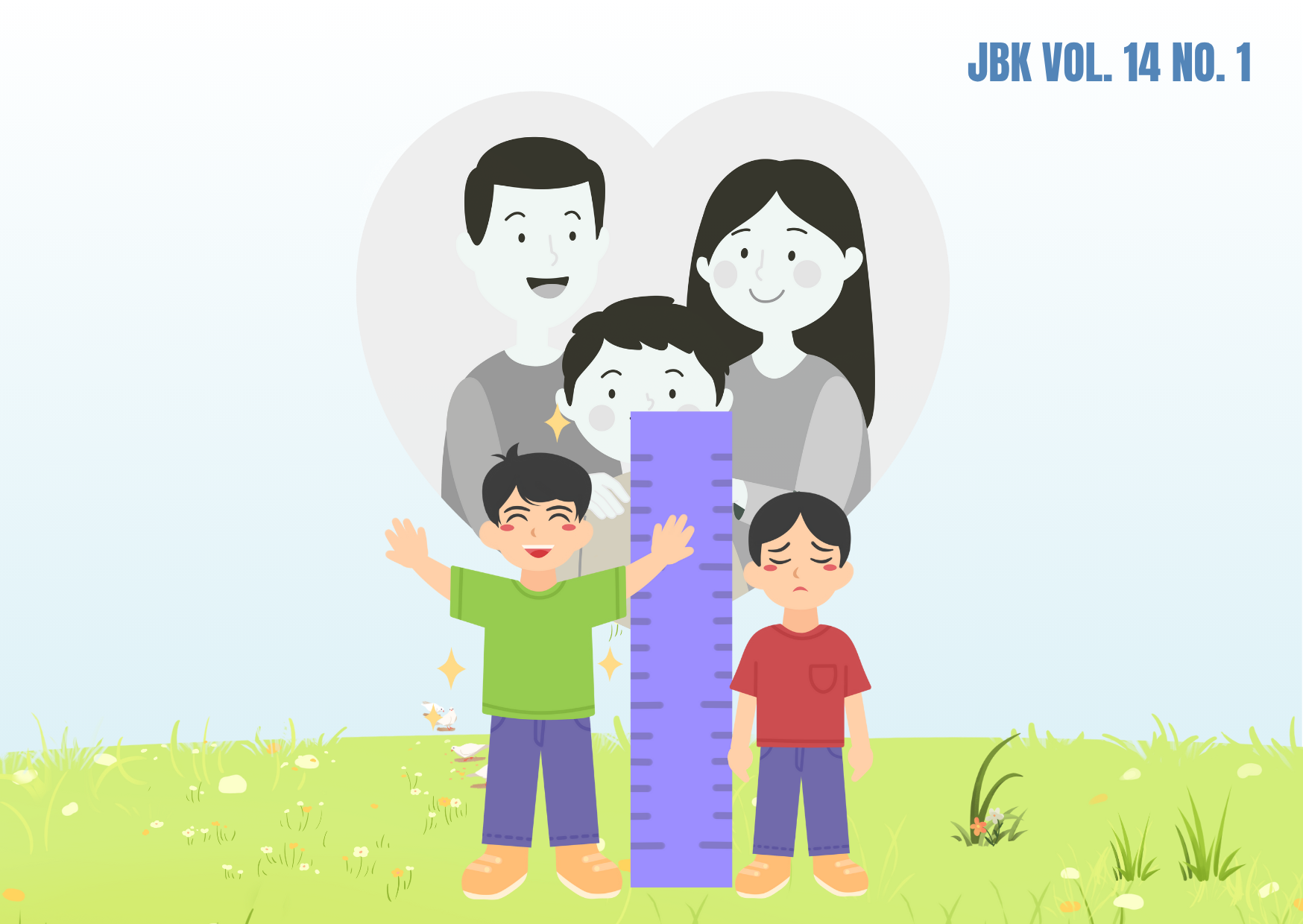DETERMINANT FACTORS COUPLES TO AVOID HAVING MORE CHILDREN IN BALI PROVINCE

Downloads
The number of married women and men who no longer want children in Bali Province is consistent with a relatively high contraceptive prevalence rate (CPR) of 67%, higher than the national average of 64%. The large proportion of couples of reproductive age (CRA) who no longer want children either at the national or provincial level in Bali is an interesting thing to be analyzed further to see the factors that influence it. This study investigated secondary data of the 2017 Indonesia Demography and Health Survey (IDHS) in Bali Province. The variables studied included socio-demographics and desire to have children. The sample size was 271 married women (15-49 years). We found that the age of women of reproductive age (WRA), occupation of WRA, number of children alive, and ideal number of children are the four significant factors that influence the desire to have no more children in married couples. Based on these findings, a better family planning program can hopefully be made in the Bali province.
Sohail R. Investing in Family Planning in Pakistan – Road to Redemption. J Soc Obstet Gynaecol Pakistan [Internet]. 2018;8(4):201–204. Available from: http://jsogp.net/index.php/jsogp/article/view/189
Kadarisman M. Family Planning Program in the National Population and Family Planning Board. Adv Soc Sci Educ Humanit Res [Internet]. 2019;343:266–269. Available from: https://doi.org/10.2991/icas-19.2019.54
The National Team for The Acceleration of Poverty Reduction. 2010 Population Census Thematic Information [Internet]. 2010. Available from: http://www.tnp2k.go.id/articles/informasi-tematik-sensus-penduduk-2010
Central Bureau of Statistics. Indonesian Population by Province, Regency/City and District Population Census 2010 [Internet]. Central Bureau of Statistics. 2010. Available from: https://www.bps.go.id/publication/2010/10/04/
National Population and Family Planning Board. Indonesia Health Demographic Survey of Bali Province in 2017. 2018.
Salvatore D. International Economics: Trade and Finance, 11th Edition International Student Version [Internet]. Eleventh E. Wiley. United States of America: Wiley; 2013. 808 p. Available from: https://www.wiley.com/
Cheema ahmed raza, Firdous S, Touqueer A, Imran M. Family Planning and Fertility Reduction in Pakistan. xIlkogretim Online - Elem Educ Online [Internet]. 2021;20(5):3617–3627. Available from: https://www.researchgate.net/
Handayani A, Najib N. Keinginan Memiliki Anak Berdasarkan Teori Pilihan Rasional (Analisis Data SDKI Tahun 2017). EMPATI-Jurnal Bimbing dan Konseling [Internet]. 2019;6(2):31–40. Available from: https://doi.org/10.26877/empati.v6i2.4277
National Population and Family Planning Board. Indonesia Demographic and Health Survey [Internet]. Jakarta; 2017. Available from: https://www.bps.go.id/statictable/2020/10/21/2111/laporan-survei-demografi-dan-kesehatan-indonesia.html
Singh, S., Sedgh, G., and Hussain R. Unintended Pregnancy: Worldwide Levels, Trends, and Outcomes. Stud Fam Plann [Internet]. 2010;41(4):241–250. Available from: https://doi.org/10.1111/j.1728-4465.2010.00250.x
Adioetomo, S.M., and Samosir OB. Dasar-Dasar Demografi. Adioetomo, Sri Moertiningsih OBS, editor. Jakarta: Salemba Empat; 2010.
Dini LI, Riono P, Sulistiyowati N. Pengaruh Status Kehamilan Tidak Diinginkan terhadap Perilaku Ibu Selama Kehamilan dan Setelah Kelahiran di Indonesia: Analisa Data SDKI 2012. J Kesehat Reproduksi [Internet]. 2016;7(2):119–133. Available from: http://dx.doi.org/10.22435/kespro.v7i2.5226.119-133
Wei J, Xue J, Wang D. Socioeconomic Determinants of Rural Women's Desired Fertility: A Survey in Rural Shaanxi, China. PLoS One [Internet]. 2018;13(9):1–18. Available from: https://doi.org/10.1371/journal.pone.0202968
Nurul Aidayasari. Faktor-Faktor yang Mempengaruhi Unmeet Need pada Pasangan Usia Subur (PUS) di Kelurahan Prawirodirjan Yogyakarta [Internet]. Universitas Aisyiyah Yogyakarta; 2017. Available from: http://digilib.unisayogya.ac.id/2807/
Indraswari RR, Yuhan RJ. Faktor-Faktor yang Memengaruhi Penundaan Kelahiran Anak Pertama di Wilayah Perdesaan Indonesia: Analisis Data SDKI 2012. J Kependud Indones [Internet]. 2017;12(1):1–12. Available from: https://doi.org/10.14203/jki.v12i1.274
Akeju K, Owoeye T, Ayeni R, Jegede L. Variations in Desired Fertility Preferences among Young and Older Women in Nigeria: Evidence from Demographic Health Survey 2018. Open Public Health J [Internet]. 2021;14(1):84–93. Available from: https://dx.doi.org/10.2174/1874944502114010084
Ariho P, Nzabona A. Determinants of Change in Fertility among Women in Rural Areas of Uganda. J Pregnancy [Internet]. 2019;2019:1–13. Available from: https://doi.org/10.1155/2019/6429171
Copyright (c) 2022 Jurnal Biometrika dan Kependudukan

This work is licensed under a Creative Commons Attribution-NonCommercial-ShareAlike 4.0 International License.
Copyright ©2022 Jurnal Biometrika dan Kependudukan (Journal of Biometrics and Population)
This work is licensed under a Creative Commons Attribution-NonCommercial-ShareAlike 4.0 International License.
1. Copyright of all journal manuscripts is held by the Jurnal Biometrika dan Kependudukan.
2. Formal legal provisions to access digital articles of the electronic journals are subject to the provision of the Creative Commons Attribution-ShareAlike license (CC BY-NC-SA), which means that Jurnal Kesehatan Biometrika dan Kependudukan to keep, transfer media/format, manage in the form of databases, maintain, and publish articles.
3. Published manuscripts both printed and electronic are open access for educational, research, and library purposes. Additionally, the editorial board is not responsible for any violations of copyright law.



































